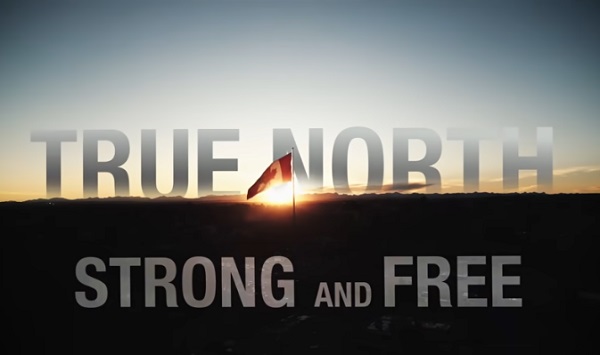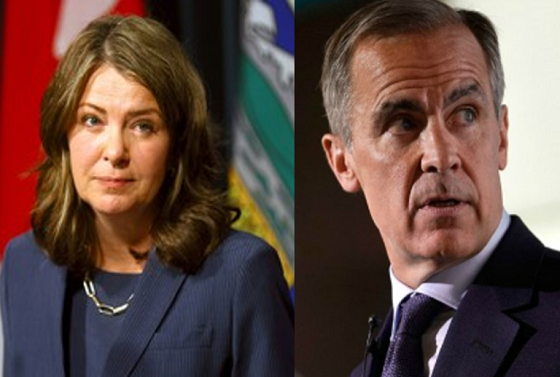Business
City of Red Deer introduces funding program to boost downtown development

From The City of Red Deer
New incentive program for downtown development projects in Red Deer
There are five funding opportunities in the program, including:
- Facade and Storefront Improvement Rebate, intended to increase a sense of downtown pride through an investment in beautification, restoration, signage and improved security features.
- Environmental Site Assessment Rebate, which supports owners of properties which require Environmental Site Assessments before redevelopment can occur.
- Demolition of Vacant and Derelict Properties Rebate, which assists property owners with demolition costs to facilitate sale or redevelopment of their property.
- Utility Connection Fee Rebate, which supports property owners required to replace or upgrade utility connections as part of developing or redeveloping on their property.
- Residential and Mixed Use Development Grant, which promotes the development of newly constructed multifamily residential and/or mixed use units.
- These opportunities will contribute to a healthy, successful downtown by improving aesthetic, encouraging developers to build residential units downtown, and reducing the costs of investing in our downtown.
“These economic development programs are taking intentional actions to incent development in our downtown,” said Tara Lodewyk, Director of Planning Services. ”We recognize that downtowns are the heart of our cities and play a vital role as our communities’ business, administrative, and cultural centres.”
Property owners and developers may apply for funding from all five opportunities for a single location, pending eligibility. The first intake occurs February 15 – March 15, 2020 and a second intake is planned for July 1 – August 1, 2020, pending available remaining funds.
For more information and to apply online, visit www.reddeer.ca/EconomicIncentives.
Business
It’s time to finally free the beer

This article supplied by Troy Media.
 By Samantha Dagres and Alessia Iafano
By Samantha Dagres and Alessia Iafano
Canada’s booze trade is a protectionist mess.
Have you ever stopped to wonder who decides what beers you’re allowed to buy? Probably not. But every time you wander into a beer store you’re browsing a lineup handpicked not just by brewers, but by bureaucrats. Your choices are less about your taste and more about politics.
Sure, you’ll find Ontario staples like Mill Street. But if you’ve got a taste for an award-winning B.C. wine, a Quebec microbrew or a small-batch rye from Saskatchewan, prepare for disappointment. Welcome to the great Canadian alcohol paradox: it’s easier to buy French wine than a bottle of craft gin from the next province over.
This absurdity gave rise to the “free the beer” movement: an effort to let Canadian alcohol flow across provincial borders like, well, an actual country. The issue hit the headlines a few years back when Gérard Comeau of New Brunswick had the gall to go on a beer run to Quebec. Instead of paying a nearly $300 fine for that cross-border booze crime, he lawyered up and took the fight to the Supreme Court. Spoiler alert: he lost. The court ruled that there’s no constitutional right to free trade within Canada. Yes, you read that correctly.
Still, Comeau’s case lit a fire under the debate. Losing the battle doesn’t always mean losing the war. Since then, there’s been modest movement toward sanity. Ottawa even announced it wanted to liberalize domestic alcohol trade earlier this year. One problem: it can’t. Canada’s Constitution gives provinces—not the federal government—control over alcohol sales. And many provinces are still clinging to their liquor fiefdoms.
To be fair, a few have started to uncork their markets. Manitoba lets you order from out-of province businesses. B.C., Alberta, Saskatchewan and Nova Scotia have partially openmarkets. The rest—including Ontario—are still stuck in prohibition-era thinking.
Want to know how much Ontario’s LCBO monopoly costs you? Check your next receipt. Then subtract about one-third of the pre-tax price: that’s the LCBO’s average markup. While grocery stores survive on razor-thin margins, the government liquor store is pouring itself a nice fat profit at your expense. But it’s not just your wallet that suffers. That monopoly also limits your choices. In Ontario it’s easier to get wine from Spain than from Quebec. Welcome to Canada.
Yes, there’s been some progress. Ontario has cracked open the door to reform with recent steps to expand direct-to-consumer sales. And now, it’s making noise about taking the lead on building a national framework that would finally let Canadians buy booze from across provincial borders without jumping through flaming hoops.
Earlier this year, Ontario signed memoranda of understanding with B.C., Alberta, Manitoba, Saskatchewan, New Brunswick, P.E.I. and Nova Scotia—agreements aimed at reducing trade barriers and building bilateral deals. Several other provinces have done the same.
The goal? A pan-Canadian framework to allow direct-to-consumer alcohol sales, where producers can ship across the country and consumers can buy what they actually want.
As of 2024, the domestic alcohol market was worth $15.5 billion for Canadian-made products—or $26.2 billion when you include imports. It’s not just common sense—it’s good economics. Smaller producers in particular stand to gain. In fact, 76 per cent of Canadian wineries say direct-to-consumer sales would increase their revenue in the next year.
And for consumers? Better access, better variety and—brace yourself—possibly lower prices.
The first framework agreement was promised with Manitoba by the end of June. That deadline has come and gone Still, for those who’ve been fighting to pry Canada’s alcohol trade from the grip of protectionism and provincial monopolies, the finish line is at least on the horizon. If Premier Doug Ford wants to live up to his “open for business” motto, now’s the time. Honour the commitments. Finish the job. Then maybe—just maybe—Canadians will finally be able to toast with a beer from another province without breaking the law.
Samantha Dagres is the communications manager and Alessia Iafano is a research intern at the Montreal Economic Institute, a think tank with offices in Montreal, Ottawa and Calgary.
Troy Media empowers Canadian community news outlets by providing independent, insightful analysis and commentary. Our mission is to support local media in helping Canadians stay informed and engaged by delivering reliable content that strengthens community connections and deepens understanding across the country.
Business
Health-care costs for typical Canadian family will reach over $19,000 this year

From the Fraser Institute
By Nadeem Esmail, Nathaniel Li and Milagros Palacios
A typical Canadian family of four will pay an estimated $19,060 for public health-care insurance this year, finds a new study released today by the Fraser Institute, an independent, non-partisan Canadian public policy think-tank.
“Canadians pay a substantial amount of money for health care through a variety of taxes—even if we don’t pay directly for medical services,” said Nadeem Esmail, director of health policy studies at the Fraser Institute and co-author of The Price of Public Health Care Insurance, 2025.
Most Canadians are unaware of the true cost of health care because they never see a bill for medical services, may only be aware of partial costs collected via employer health taxes and contributions (in provinces that impose them), and because general government revenue—not a dedicated tax—funds Canada’s public health-care system.
The study estimates that a typical Canadian family consisting of two parents and two children with an average household income of $188,691 will pay $19,060 for public health care this year. Couples without dependent children will pay an estimated $17,338. Single Canadians will pay $5,703 for health care insurance, and single parents with one child will pay $5,934.
Since 1997, the first year for which data is available, the cost of healthcare for the average Canadian family has increased substantially, and has risen more quickly than its income. In fact, the cost of public health care insurance for the average Canadian family increased 2.2 times as fast as the cost of food, 1.6 times as fast as the cost of housing, and 1.6 times as fast as the average income.
“Understanding how much Canadians actually pay for health care, and how much that amount has increased over time, is an important first step for taxpayers to assess the value and performance of the health-care system, and whether it’s financially sustainable,” Esmail said.
The Price of Public Health Care Insurance, 2025
- Canadians often misunderstand the true cost of our public health care system. This occurs partly because Canadians do not incur direct expenses for their use of health care, and partly because Canadians cannot readily determine the value of their contribution to public health care insurance.
- In 2025, preliminary estimates suggest the average payment for public health care insurance ranges from $5,213 to $19,060 for six common Canadian family types, depending on the type of family.
- Between 1997 and 2025, the cost of public health care insurance for the average Canadian family increased 2.2 times as fast as the cost of food, 1.6 times as fast as the average income, and 1.6 times as fast as the cost of shelter. It also increased much more rapidly than the average cost of clothing, which has fallen in recent years.
- The 10 percent of Canadian families with the lowest incomes will pay an average of about $702 for public health care insurance in 2025. The 10 percent of Canadian families who earn an average income of $88,725 will pay an average of $8,292 for public health care insurance, and the families among the top 10 percent of income earners in Canada will pay $58,853.
-

 Censorship Industrial Complex2 days ago
Censorship Industrial Complex2 days agoFreedom of speech under threat on university campuses in Canada
-

 Business2 days ago
Business2 days agoCarney engaging in Orwellian doublethink with federal budget rhetoric
-

 Alberta2 days ago
Alberta2 days agoOttawa’s destructive federal energy policies and Premier Danielle Smith’s three part solution
-

 Alberta2 days ago
Alberta2 days agoIs Alberta getting ripped off by Ottawa? The numbers say yes
-

 Energy2 days ago
Energy2 days agoCanada’s LNG breakthrough must be just the beginning
-

 Business2 days ago
Business2 days agoCourt’s ‘Aboriginal title’ ruling further damages B.C.’s investment climate
-

 Agriculture2 days ago
Agriculture2 days agoIn the USA, Food Trumps Green Energy, Wind And Solar
-

 Business2 days ago
Business2 days agoManitoba Must Act Now To Develop Its Northern Ports



